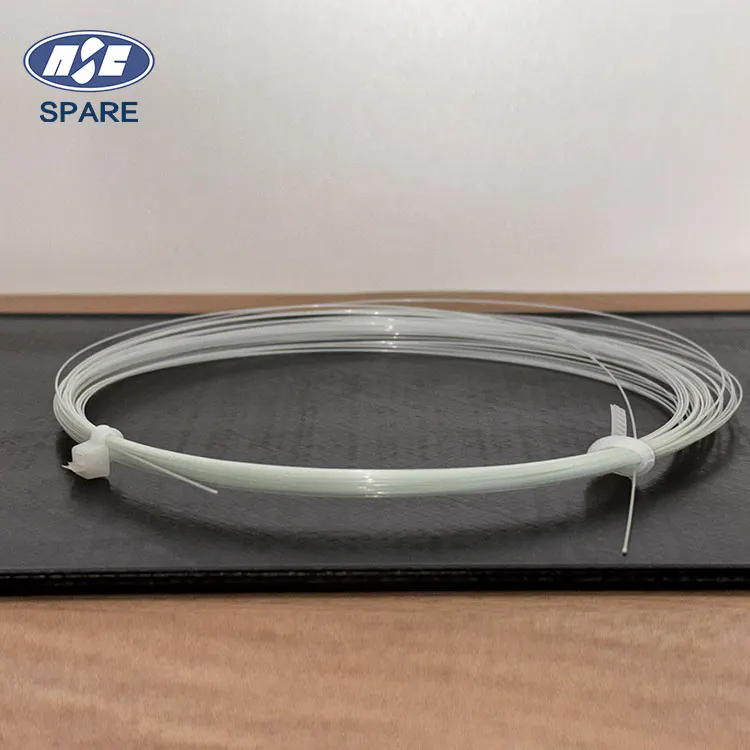What Are FRP Standard Profiles and How Are They Revolutionizing Construction and Manufacturing?
2024-11-14
In industries ranging from construction to transportation to infrastructure, the demand for durable, lightweight, and cost-effective materials has never been greater. One material that has gained significant traction in recent years is FRP (Fiber Reinforced Plastic), particularly in the form of standard profiles. But what exactly are FRP standard profiles, and why are they becoming a go-to solution for many applications? In this blog, we will explore what FRP standard profiles are, their advantages, and why they are revolutionizing industries that require strong yet lightweight materials.
What Are FRP Standard Profiles?
FRP standard profiles refer to pre-formed shapes or sections made from fiber-reinforced plastic. These profiles typically consist of a combination of a thermosetting resin (such as polyester, vinyl ester, or epoxy) reinforced with various fibers, usually glass fibers, although carbon or aramid fibers may also be used in specialized applications. The resin provides strength and durability, while the fiber reinforcement offers excellent tensile strength, flexibility, and resistance to impact.
These profiles are created using a process called pultrusion, where fibers are pulled through a resin bath and then passed through a heated die to harden the material. This process results in a consistent, high-quality product with exceptional mechanical properties, which can then be cut and shaped into standard profiles like I-beams, angles, channels, and more.
Why Are FRP Standard Profiles So Popular?
1. Lightweight and Strong
One of the most significant advantages of FRP standard profiles is their lightweight nature. Despite being much lighter than traditional metal profiles such as steel or aluminum, FRP profiles retain impressive strength and structural integrity. This combination of strength and lightness makes them ideal for applications where weight reduction is important, such as in construction, transportation, and marine industries.
2. Corrosion Resistance
Unlike metal profiles, which can corrode or degrade when exposed to moisture, chemicals, or harsh environments, FRP profiles are highly resistant to corrosion. This makes them perfect for use in environments prone to moisture, chemicals, or saltwater, such as offshore structures, bridges, and water treatment facilities. FRP does not rust or deteriorate, ensuring longer lifespan and reduced maintenance costs.
3. High Durability
FRP profiles are resistant to many environmental factors, including UV radiation, extreme temperatures, and chemical exposure. They do not weaken over time like other materials, such as wood or steel, which can deteriorate with prolonged exposure to the elements. This durability ensures that FRP profiles maintain their strength and performance over time, even in demanding conditions.
4. Design Flexibility
FRP standard profiles come in a wide variety of shapes and sizes, allowing for great design flexibility. Whether you need beams, columns, channels, angles, or other custom profiles, FRP can be tailored to meet your specific needs. The ability to create complex shapes without the need for additional machining or modification makes FRP an attractive option for many applications.
5. Ease of Installation
Because FRP profiles are lightweight yet strong, they are easier and quicker to handle and install compared to traditional materials like steel or concrete. This can result in faster project completion times, lower labor costs, and reduced transportation expenses. The ease of installation is a particularly appealing feature for projects with tight timelines or budgets.
6. Environmental Sustainability
FRP is a sustainable material choice, as it is energy-efficient to produce compared to metals, and it is recyclable. Many manufacturers also use eco-friendly resins and fibers, making FRP profiles a greener alternative to traditional materials. Furthermore, FRP's long lifespan and low maintenance requirements contribute to its sustainability by reducing the need for frequent replacements and repairs.
7. Electrical Insulation Properties
FRP profiles also have excellent electrical insulation properties, making them a great choice for applications in electrical and telecommunications industries. Since FRP does not conduct electricity, it is ideal for use in areas where electrical insulation is critical, such as electrical enclosures, support structures for power lines, or safety barriers.
Applications of FRP Standard Profiles
FRP standard profiles have found widespread use in various industries thanks to their unique combination of strength, lightness, and durability. Here are some of the most common applications:
1. Construction and Infrastructure
FRP standard profiles are used in the construction of bridges, walkways, staircases, and structural supports, especially in locations that are exposed to harsh environmental conditions like saltwater or chemicals. The corrosion resistance and strength of FRP make it an excellent choice for infrastructure projects that require longevity and low maintenance.
2. Marine and Offshore Structures
Due to their resistance to water and corrosion, FRP profiles are extensively used in the marine industry for the construction of boat hulls, docks, and offshore platforms. They provide a lightweight, durable alternative to metal, which can corrode and degrade when exposed to seawater.
3. Transportation
FRP standard profiles are used in the construction of lightweight structural components in automobiles, trains, and aerospace industries. The weight savings provided by FRP can improve fuel efficiency and performance in transportation vehicles. Additionally, the durability of FRP contributes to the longevity of parts exposed to harsh environmental conditions.
4. Electrical and Telecommunications
In the electrical and telecommunications industries, FRP profiles are used to build electrical enclosures, antenna support structures, and utility poles. Their electrical insulation properties make them safe for use in areas that are exposed to high voltages, and their resistance to environmental degradation ensures long-term performance.
5. Water Treatment and Chemical Plants
FRP is commonly used for structural components and supports in water treatment facilities and chemical plants, where exposure to harsh chemicals and moisture is a concern. FRP profiles are also used for piping and equipment housings in these industries due to their ability to withstand corrosive environments.
6. Agricultural and Industrial Applications
In agricultural and industrial settings, FRP profiles are used for everything from structural supports in warehouses to fencing systems. Their resistance to corrosion, combined with strength and durability, makes them ideal for industrial environments where other materials might degrade quickly.
Conclusion
FRP standard profiles are transforming industries across the globe, offering a highly durable, lightweight, and corrosion-resistant alternative to traditional building materials. Whether in construction, marine, electrical, or transportation applications, FRP profiles are being used to create strong and sustainable solutions that stand the test of time. Their ability to combine strength with lightness, versatility in design, and low-maintenance qualities make them an invaluable resource for manufacturers, engineers, and designers.
As industries continue to seek more cost-effective and sustainable materials, FRP standard profiles are likely to remain at the forefront of innovation, providing high-performance solutions across a wide range of applications. If you're looking for a material that offers durability, environmental resistance, and design flexibility, FRP profiles might be just the solution you need.



